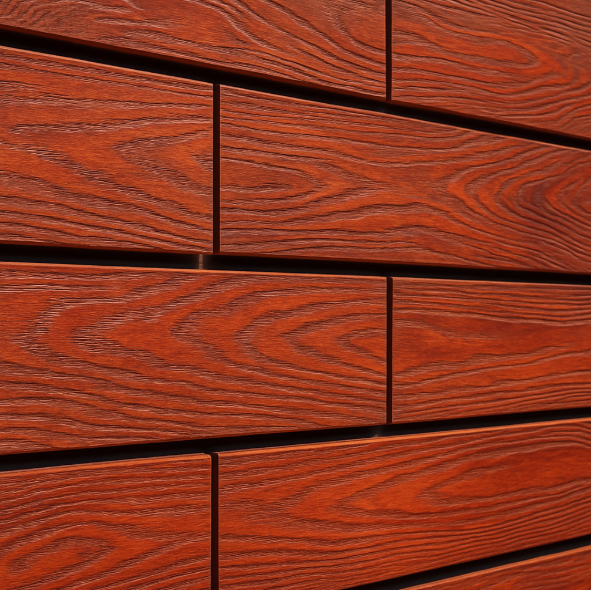In recent years, composite cladding boards have gained immense popularity in residential and commercial architecture alike. As homeowners, builders, and designers look for durable, stylish, and sustainable exterior solutions, composite materials have emerged as a strong alternative to traditional timber, vinyl, and aluminum cladding.
But what exactly makes composite cladding so appealing and what are its limitations? Whether you’re planning a home renovation, constructing a new building, or exploring sustainable design solutions, understanding the advantages and disadvantages of composite cladding boards is essential.
This guide will help you make a well-informed decision by diving deep into all aspects of composite cladding performance, aesthetics, costs, sustainability, and more.
What Is Composite Cladding?
Composite cladding is an exterior covering made from a blend of recycled wood fibers and plastic (usually polyethylene or PVC). It mimics the natural look of timber while offering enhanced performance characteristics, such as weather resistance, rot prevention, and long-term durability.
Cladding is installed as an outer layer on the building’s facade to:
- Improve insulation
- Enhance curb appeal
- Protect against the elements
Composite cladding boards come in various colors, grains, finishes, and installation profiles making them a versatile choice for modern and classic building designs.
The Top Benefits of Composite Cladding Boards
- Exceptional Durability
Unlike traditional timber, composite cladding doesn’t warp, split, or crack when exposed to moisture, temperature fluctuations, or UV rays. Its high resistance to environmental stress makes it suitable for all climates from hot coastal areas to snowy mountain homes.
- No Rot or Insect Damage: The plastic content protects the board from termites, fungi, and mold.
- Fade Resistance: High-quality composite boards retain color even after years of sun exposure.
This level of durability translates into fewer repairs and a longer lifespan, often up to 25–30 years with minimal maintenance.
- Low Maintenance
Timber cladding requires staining, sealing, or painting every couple of years. Composite cladding? Just rinse it with water or use a mild soap solution if needed.
- No repainting or sealing needed
- Dust, dirt, and rain easily wash off
- Doesn’t splinter, peel, or erode over time
This makes composite cladding particularly attractive to property managers and homeowners who prefer a set-it-and-forget-it exterior finish.
- Aesthetic Versatility
Today’s composite boards closely mimic natural wood, offering a luxurious, organic feel without the upkeep.
You can choose from:
- Woodgrain finishes (cedar, oak, teak, walnut)
- Matte or grooved textures
- Horizontal, vertical, or shiplap profiles
- Earth tones, charcoals, greys, and bold contemporary hues
Whether your style leans rustic farmhouse or sleek modern, composite cladding complements it with elegance and visual warmth.
- Sustainability and Eco-Friendliness
Most composite cladding boards are made from 95% recycled materials including reclaimed wood fibers and plastic waste. This not only diverts material from landfills but also reduces demand for virgin timber, preserving forests.
Additionally:
- Many boards are fully recyclable at the end of life
- Energy use in production is typically lower than aluminum or fiber cement alternatives
This makes composite cladding a smart choice for green building certifications and environmentally conscious designs.
- Improved Insulation and Energy Efficiency
Composite cladding can enhance your building’s thermal performance by creating an additional barrier between the elements and your internal wall structure.
Benefits include:
- Reduced heat loss in winter
- Less solar gain in summer
- Enhanced acoustic insulation (ideal for noisy neighborhoods or commercial buildings)
Paired with proper underlayment and installation, this can reduce your HVAC bills over time.
The Drawbacks of Composite Cladding Boards
While the benefits are compelling, composite cladding isn’t flawless. Understanding its limitations helps you set realistic expectations and make the best decision for your project.
- Higher Initial Cost
Composite cladding tends to be more expensive upfront than timber or vinyl.
- Material costs can range from $9 to $15 per square foot (excluding installation)
- Labor costs may also be higher due to the need for specialized installation tools and fixings
However, the long-term savings on maintenance, repair, and replacement often outweigh the initial investment.
- Heat Retention in Hot Climates
Because of its plastic content, composite cladding may retain more heat than natural wood when exposed to direct sunlight. This can make the surface hot to touch in summer, especially in darker colors.
Choosing lighter shades and ventilated installation designs can mitigate this effect.
- Not Completely Natural in Appearance
While the latest composite boards come impressively close to real wood, some homeowners and purists can still spot the difference especially up close.
If you’re seeking the exact grain and feel of natural timber, high-end hardwood cladding might be a better aesthetic match, though at a much higher maintenance cost.
- Requires Proper Installation
Composite boards must be installed with correct spacing, sealing, and clips to allow for expansion and drainage.
Incorrect installation can lead to:
- Warping or gapping
- Water damage behind boards
- Reduced lifespan
It’s essential to hire experienced installers or follow the manufacturer’s guidelines closely if you’re doing it yourself.
- Limited Customization After Purchase
Unlike wood, which you can stain or paint to your liking, most composite boards are manufactured in a fixed color and finish. While this ensures consistency, it limits design flexibility after installation.
Make sure to sample several finishes before deciding.
Is Composite Cladding Worth It?
If you’re looking for a low-maintenance, eco-friendly, and stylish exterior solution that performs well over decades, composite cladding is worth serious consideration.
It’s particularly suited for:
- Busy homeowners who don’t want the hassle of frequent upkeep
- Coastal or humid regions prone to rot and insects
- Eco-conscious builders aiming for sustainable certifications
- Modern and urban homes seeking clean, sleek facades
The upfront cost may seem high, but when you factor in the savings on maintenance, repairs, and replacements not to mention the value it adds to curb appeal composite cladding often proves to be a smart long-term investment.
Final Thoughts
Every exterior cladding material has its pros and cons. Composite cladding strikes an impressive balance between performance, appearance, and sustainability, making it one of the best modern alternatives to wood.
Before making a purchase:
- Compare product warranties and certifications
- Get samples to see color and texture in real life
- Budget for installation and hidden costs
- Ensure proper ventilation and waterproofing
By weighing the benefits and drawbacks, you can decide if composite cladding aligns with your design goals and functional needs.
Whether you’re building new or upgrading your current façade, composite cladding offers the durability of the future without sacrificing the warmth of natural design.



